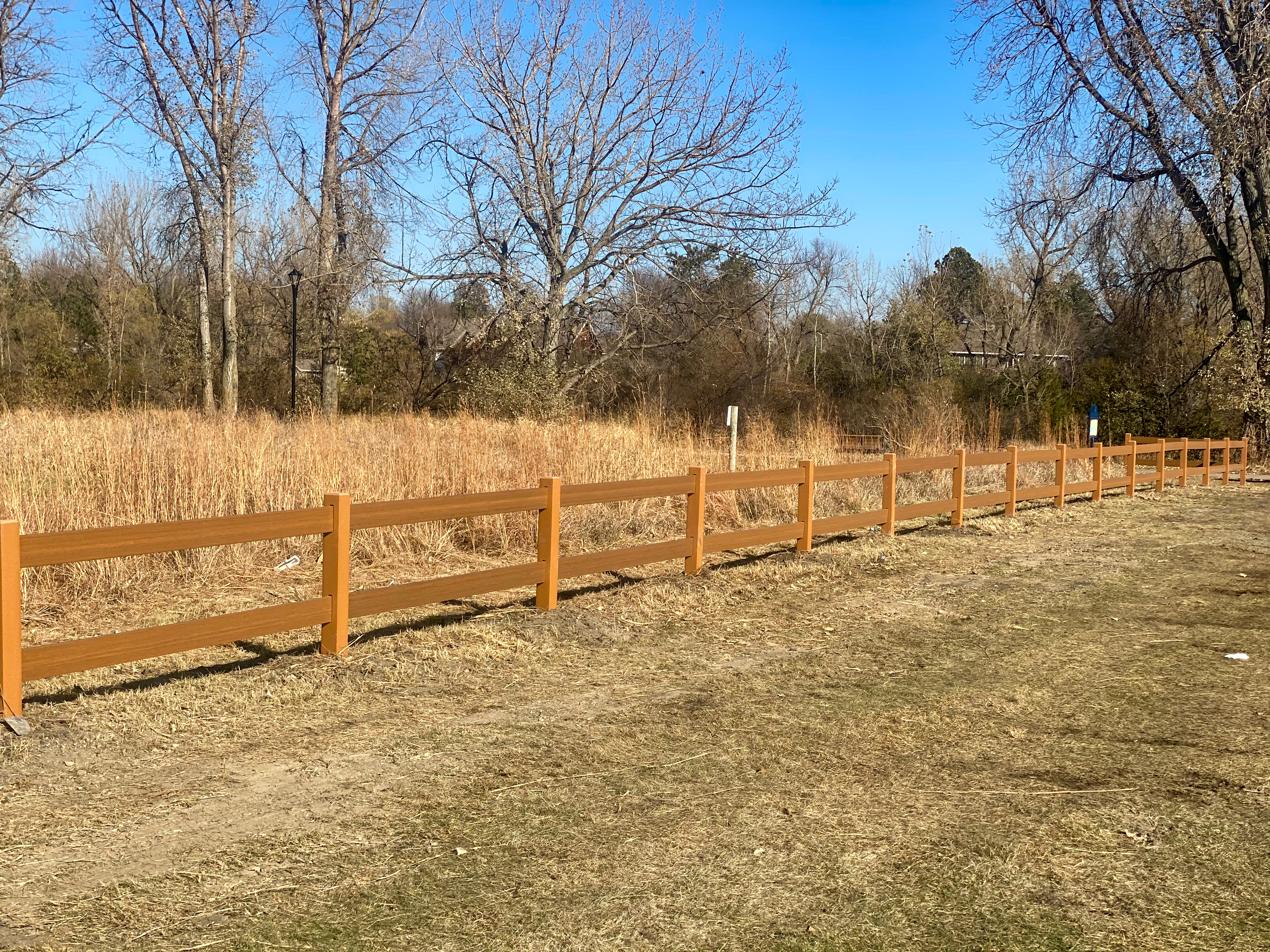The Future of PVC Fencing Vs. HDPE Fencing

Polyvinyl Chloride (PVC) plastic has become a popular fencing material as a result of its versatility and low cost, but PVC fencing is not an ideal material for the future. While the initial low price tag may seem attractive, it is deceiving. The environmental cost of manufacturing PVC is more alarming than the upfront price tag. The chlorine in PVC produces dioxins during the manufacturing process. Dioxins are known to be carcinogens, which can have harmful health effects.
Alternative Materials to PVC Fencing
Traditional Wood Fencing
Traditional wood fencing has issues like high maintenance costs, short lifetime of a single installation, and treated wood has chemicals that can damage humans and the environment as well. Traditional wood fencing, while an alternative to PVC, will not be retaking the industry over PVC fencing any time soon.
HDPE Plastic Lumber
HDPE plastic lumber is made from post-consumer and post-industrial recycled materials like milk jugs and laundry detergent bottles. PVC fencing gets praise for its resistance to moisture and abrasion, but HDPE reaps these benefits too. Plus the recycled plus it saves plastic from entering landfills. Like PVC, HDPE does not corrode, nor does it require frequent painting or other forms of upkeep. HDPE is also known for its toughness, being able to stand up to changing conditions and temperatures. PVC expands and contracts in changing temperatures, making it more brittle and susceptible to damage and breaking in cold environments. If used for fencing material, one will need to spend time and money replacing caps and repairing cracks in a PVC fencing.
The Future of Fencing
HDPE plastic lumber has no downside. It is environmentally friendly, cost-effective, low-maintenance, durable, and can mimic the look and feel of almost any traditional wood fence. Contact Tangent today to use HDPE plastic lumber for your next fencing project.













